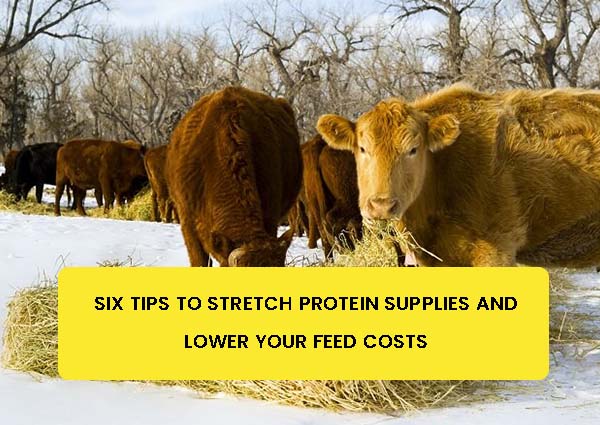Six Tips To Stretch Protein Supplies And Lower Your Feed Costs
Six Tips To Stretch Protein Supplies And Lower Your Feed Costs
We all know that 2020 proved to be a roller-coaster year for commodity markets, and as we’ve seen over the past number of weeks, 2021 appears to be following a similar track
Six Tips To Stretch Protein Supplies And Lower Your Feed Costs
To achieve the goal of our customers by fulfilling the suitable requirements by faster manufacturing process without compromising on our core values and commitment.
To achieve the goal of our customers by fulfilling the suitable requirements by faster manufacturing process without compromising on our core values and commitment.

Forage quality
With the continual rise of prices in the crops such as corn and soybean, producers should make the most of cheaper high-fiber feeds, especially forages. Plan to make the highest-quality forage possible, since this is often a significant component of the slowly digestible part of ruminant diets. Forage is actually the most variable feed ingredient in terms of its digestibility and nutrient composition, and it comprises a greater proportion of the ration than any other type of feedstuff. High-quality forage is more digestible, so you’ll be able to feed more of it. Rumen health and productivity will improve with the utilization of high-quality forages, and as such, forages can influence feed efficiency in dairy and beef cattle through the maintenance of a desirable rumen environment.
Support the rumen
There are several elements to increasing feed efficiency in ruminants, but one among the most important is to use the rumen to its full potential by supporting the activity and growth of rumen microflora. This further enables dietary nutrients to be extracted from the diet as efficiently as possible. The nutrients provided to the rumen microflora must be quite well-balanced in terms of their fermentable energy as well as protein supply. Fermentable protein nutrition must be specifically adapted to maximise rumen microbial population activity and growth, as different populations have different requirements in term of how nitrogen is supplied.
Wasted energy means wasted profits
For several years, nutritionists have overfed crude protein to fulfill the amino acid needs for their desired milk yield or daily liveweight gains. Besides the significant increase in input costs, this also leads to poor nitrogen efficiency and, subsequently, higher nitrogen excretion, which is detrimental to both the environment and also the producer’s profits. The dairy cow inherently suffers because of poor nitrogen efficiency, since excessive nitrogen is converted 1st into ammonia and then into urea, which is partially recycled, however the vast majority is excreted. Ultimately, there’s an energy loss related to this process because of the detoxification of ammonia into urea. Furthermore, this energy cost actually comes at the expense of productivity and biological functions.
Here are 6 tips to help you:
• Increasing prices as well as demand for proteins mean that close attention needs to be paid to the nutritional composition of vegetable protein stocks, which could widely vary in their consignment and place of origin and, thus lead to, putting animal performance at risk. • Make the most of cheaper high-fiber feeds, especially forages, but make sure that those forages are high-quality. • Support the rumen and make sure that it’s being used to its full potential. Moreover, this will enable nutrients to be extracted from the diet quite efficiently. • Consider feeding balanced, lower-protein diets to stretch your protein supplies, which can be necessary in case of a shortage later this year. • Include Optigen in your rations of dairy and beef cattle as a nutritional solution for lowering your dietary protein while increasing efficiency. In addition, the partial replacement of bulky vegetable protein sources with Optigen, a concentrated nitrogen source, further creates extra space in the diet in order to increase the inclusion of cheaper home-grown forages. • Take this chance to look at how environmentally friendly the feedstuffs you use are, as protein sources can carry a high carbon burden if they’re not sourced from responsible production, ultimately impacting the long-term sustainability of the operation.
